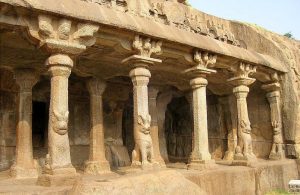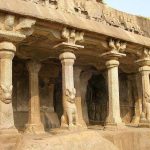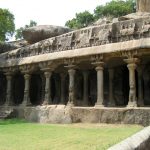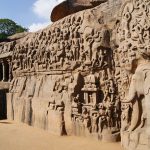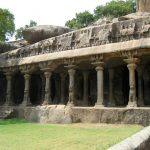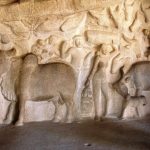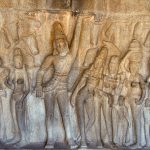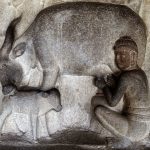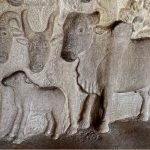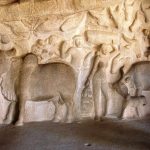Written by Soudip
September 29th 2016Other Places
You Are Here
Home > India > Shaniwar Wada, Pune Historical Facts and PicturesKrishna Cave Temple Historical Facts and Pictures
Krishna Cave Temple also referred to as Krishna Mandapam or Mandapa of Krishna is an architectural edifice at Mahabalipuram in the state of Tamil Nadu, India. Carved out of artificial rocks, the mandapa is one of the most important cave temples of Mahabalipuram that are dedicated to Lord Krishna.
History
The rock-cut temple was created during the Pallava dynasty exemplifying ancient Indian rock-cut architecture. The rock-cut cave temple reflects the brilliance of ancient Vishwakarma Sthapathis. It was an open-air bas-relief in its true form which was enclosed within a cave or mandapa during the Vijayanagara Empire in the 16th century.
- Krishna Cave Temple
- Krishna Cave Temple Entrance
- Krishna Cave Temple Pictures
- Krishna Cave Temple Pillars
- Krishna Cave Temple Sculpture
- Krishna Lifting Govaradhan Hill
- Krishna Milking
- Krishna’s Cows
- Relief of the Milkmaids and Animals Inside Krishna Cave Temple
Architecture
It is one of the unique mandapas of Mahabalipuram with a shallow cave porch sculpted into the rock face. The cave lies on a hillock beside the open rock relief of Descent of the Ganges.
The entrance has many pillars while the interior design and layout are simple. The cave’s portion facing east is 29 feet (8.8m) in length with a height of 12 feet (3.7m).
The cave consists of nine reliefs carved on the rock surfaces all dating back to the 7th century, but was reconditioned, and further additions were made in the 16th century. There were numerous frescoes carved on the wall depicting various themes. The most significant carving inside are the sculpted panels that reflect the myth of Krishna lifting the Govardhana Hill to provide shelter to the cowherds and gopis (milkmaids) from rain and floods. In this fresco, three females are present to the right of Krishna; one among them is believed to be Radha.
Other scenes include Krishna in a playful mood with the milkmaids. One fresco shows an elderly person bearing a child on his shoulders. The frescos capture various moods of Krishna as he is seen playing flute in the fields in another fresco. Gopis carrying water pots on their heads amidst a flute playing cowherd and a woodcutter traveling with an axe forms the themes of other frescoes. Some other themes include a child cuddling her mother and a lady with a milk pot and a rolled mat.
Category
IndiaWritten by Soudip
September 29th 2016










